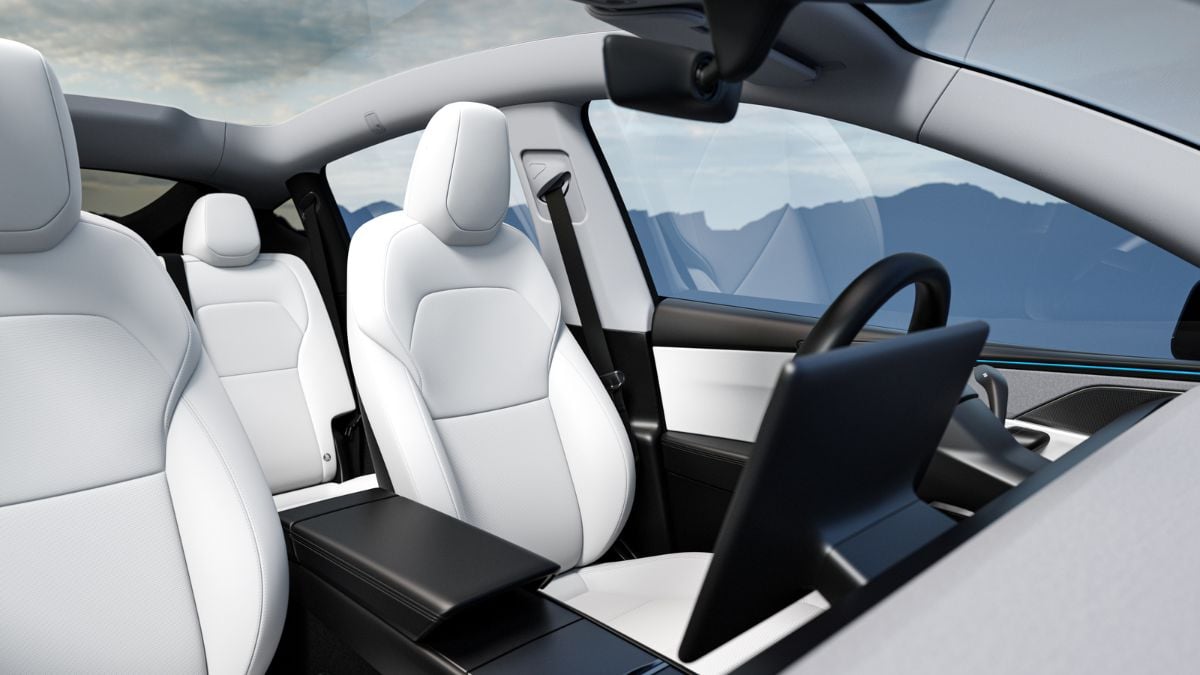For a car that’s supposed to save you money on fuel, small costs can start to add up when you're relying on supercharging. This was the case for one Tesla owner whose low-mileage lifestyle didn’t stop him from racking up a triple-digit Supercharging bill. While scrolling through the “Tesla Model Y” Facebook group this afternoon, I came across a post from Luca Escobedo that perfectly captured this unexpected reality.
In Luca’s own words: “June isn’t over yet and I've spent $123 on Supercharging. Am I doing something wrong? I have a 2021 Tesla Model Y Performance. I ‘feel’ like I don’t drive a lot considering I work from home and my girlfriend drives about 0.3 miles from home when she is at work. I have Sentry Mode on all day though. Does that really take that much of a toll on my battery? Not complaining but just wondering if any of you have the same experience with charging costs.”
When Supercharging Becomes the Default
Tesla owners often hear that charging at home is the best-case scenario. And when it isn’t available, like in Luca’s case where home charging wasn’t an option, supercharging becomes the norm. But as convenient as Tesla’s Supercharger network is, it can come with costs that add up quickly if you rely on it exclusively.
Luca’s situation isn’t rare. Many urban Tesla owners live in apartments or condos where installing a wall charger isn’t possible. Without access to Level 1 or Level 2 charging, they depend solely on DC fast charging, which was never meant to be a daily solution. Those chargers are mostly designed for convenience and speed and not necessarily long-term affordability or battery health.
It also raises questions about background battery usage. Sentry Mode, while offering security and peace of mind, is known for its drain. It keeps cameras rolling, sensors awake, and the car in a semi-wake state 24/7. Over the course of a month, it can quietly siphon off enough energy to require more frequent charging than one would expect, especially for drivers who otherwise don’t rack up many miles.
This conversation brings to mind the concerns highlighted in another case, where an owner felt forced into selling their Tesla Model Y due to outrageous registration fees. In both cases, it’s not that the car itself failed to deliver on performance, but that ownership costs started to outweigh the perceived value.

What Other Tesla Owners Had to Say
Luca’s post drew in plenty of responses, each offering a different perspective. One of the most striking came from Kyle Cooper, who challenged the common advice to "just charge at home."
“Crazy how everyone says charge at home. My house is 12 cents per kWh. They charge me about the same in taxes and fees. My cost averages around 24 cents and the Super Charger only costs 26 cents on off time and 35 during peak hours. I don't see a big cost savings at all,” Kyle wrote.
His point is a good reminder that not all home charging is cheap. Depending on your local utility structure or grid fees, charging at home may not always deliver the savings people expect. This could prove true in states with tiered pricing or older homes with outdated infrastructure.
Regina Mackiewicz shared her own complications around home charging: “Before I can get a home charger installed I have to upgrade my breaker box. My house is 50+ years old. $2k plus the cost of the charger and then charging overnight discount. At the moment I have a few ‘free’ slow chargers in my area. I plan grocery trips around charging to get the 10% range.”
Her story sheds light on a less discussed issue: not all homes are ready for EVs. The costs of upgrading outdated electrical systems can be a barrier for first-time EV owners who may have underestimated installation expenses. In those moments, public chargers serve as strategic stopgaps.
Then there’s Jeily Russo, who has a relatively frictionless setup and noticed a slight uptick in her electric bill: “I believe my electric went up about $35 a month since we installed the home charging station.”
Compared to Luca’s $123 Supercharging bill, Jeily’s $35 increase is relatively on the milder side. Now it wasn't mentioned how much driving Jeily got out of that $35, but for a fully electric vehicle used regularly, that kind of monthly bump is actually a testament to how economical home charging can be. It’s a subtle but clear win for those with a stable setup, and a good reminder that not all charging solutions are created equal.
How Luca Responded to the Advice
After reading through the comments and suggestions from fellow Tesla owners, Luca decided to take action. In a follow-up post, he shared: "Thank you all for the info! I see that charging at home would bring out the benefits of having a Tesla. Will be renting a garage with a wall outlet at my apartment for $100 a month!"
It’s a move that seems counterintuitive at first glance. Why pay $100 each month just to charge at home? But the logic becomes clearer when you consider that a lot of apartment complexes don't actually charge for the electricity in the garage (at least not where I used to live.) This can drop the monthly charging cost and give him basically an infinite range for a stable price. Not to mention the added peace of mind and battery longevity.
Even when electricity costs are calculated in garage cost uses, the Tesla becomes better value when it's used the way it was designed to be used: paired with overnight and low-stress home charging.
Why This Isn’t Just a Luca Problem
The reality is that Tesla ownership varies wildly depending on your charging situation. This is why prospective buyers who live in apartments or urban centers often overlook or underestimate what charging logistics will look like.
Even among those who do have home charging, concerns can arise. Some have reported that their Tesla Model Y exhibited battery degradation even with relatively low mileage, raising questions about long-term usage habits. Others have pointed out how reliability shifts when you upgrade from an older Tesla Model Y to a newer one and start tracking range more closely.
In any case, being mindful of how and where you charge is central to getting the most out of your EV, both financially and technically.
I think this story is a great reminder that EVs, for all their innovation, still rely on a very old-fashioned question: where do you plug in? As someone who follows Tesla news and real-world owner experiences daily, I’ve seen how much the ownership journey depends not just on specs or price, but infrastructure as well.
It’s not uncommon to hear stories of Model Ys leaving people stranded despite having plenty of battery charge or others noting the complete opposite with a flawless experience. But at the end of the day, none of that matters if you can't charge efficiently.
For many, EV ownership starts off exciting and then meets reality, and reality means doing the math. Luca did exactly that and his decision to rent a garage with a wall outlet is one a lot of urban EV owners relate to.
Key Takeaways
- Supercharging isn't always the deal it appears to be. Especially if you're not using your Tesla for long road trips, relying on DC fast charging for day-to-day use can actually become one of the most expensive ways to own an EV.
- Home charging remains king when it comes to affordability and convenience. Even if it requires upfront investment or ongoing rental fees, the long-term benefits almost always outweigh the costs.
- Features like Sentry Mode add up. While they offer great peace of mind, they also consume a surprising amount of battery when left on 24/7. Consider using them selectively or scheduling downtime if you’re parked in safe areas.
- Your living situation matters more than you think. If you're shopping for an EV, take the time to assess your actual charging options. Public infrastructure may be growing, but it's no substitute for predictable and overnight home charging.
- Small changes can lead to big savings. Renting a garage or investing in a home setup may feel like a burden at first, but it can end up slashing your monthly costs by more than half.
What About You?
Have you ever been surprised by how much your monthly charging costs added up, especially if you don’t drive that much?
And if you don’t have home charging, how are you managing your EV ownership? Do you see similar patterns, or have you found clever workarounds?
Don't hesitate to share your experiences in the comments below.
Aram Krajekian is a young automotive journalist bringing a fresh perspective to his coverage of the evolving automotive landscape. Follow Aram on X and LinkedIn for daily news coverage about cars.
Image Sources: Tesla’s gallery












Comments
It seems common for people…
Permalink
It seems common for people who buy electric cars to think that they will save an incredible amount of money over an ICE vehicle. The reality is that electricity is not cheap, and it will get more and more expensive the higher the demand. If we were to all drive electric cars, it would actually be more expensive per person than driving ICE vehicles. Electric vehicles are a decent alternative but they simply can't replace ICE vehicles.
It would be useful if we…
Permalink
It would be useful if we know where people live, just to compare prices at home, at the superchargers or elsewhere. Here in Europe prices seems to be very different, even in different European countries!
"I have Sentry Mode on all…
Permalink
"I have Sentry Mode on all day though."
Essentially this is like leaving the engine running all the time.
It's cheaper to charge your…
Permalink
It's cheaper to charge your EV at home. Still superchargers are cheaper than gas.
I mainly charge at my local…
Permalink
I mainly charge at my local shopping mall, 11 kW. Can't charge at home.